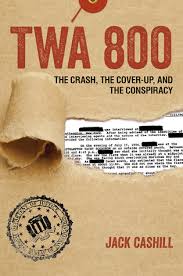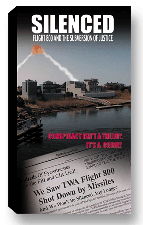Why Media Buried Newark Schoolyard Massacre
![]()

Order Jack Cashill's latest book, TWA 800: The Crash, the Cover-Up, and the Conspiracy
![]()

About Silenced: Flight 800
and the Subversion
of Justice (DVD) -
-Buy the Silenced DVD-
![]()
© Jack Cashill
February 20, 2019 - WND.com
Whenever there is a mass murder in the United States, leftist trolls immediately take to Twitter to mock some feature of traditional America they despise.
Guns are easy and inevitable. The whiteness of the shooter rivals guns as a target. If the shooter is black, like Gary Martin in Aurora, Illinois, and the state screwed up the background check, the trolls look for some other point of vulnerability.
Last week it was the border wall. Somehow hundreds, perhaps thousands, of Twitter trolls decided simultaneously and gleefully to point out that no wall would have stopped Martin in Aurora.
The trolls worked under the assumption that if mass shooters are not exclusively white, they are exclusively American. In fact, mass shooters are disproportionately black, but that is a story for another day.
One reason trolls believe mass shooting is a homegrown pathology is that their media bury stories of grotesque crimes that do not fit the pattern.
No such story was more grotesque—or more deeply buried-- than the Mount Vernon Schoolyard Massacre in Newark, New Jersey.
Leading the international gang of killers was Jose Carranza, an illegal alien from Peru. Joining him, among others, was an illegal from Honduras and another illegal from Nicaragua.
Carranza and his buddies were drinking and smoking marijuana in the schoolyard when they spied four young black students playing music, two male and two female, and judged them easy prey.
Unlike with, say, Trayvon Martin or Michael Brown, there were no complicating factors in the victims’ biographies.
Dashon Harvey, 20, was entering his junior year at Delaware State University. Terrence Aeriel, 18, was to begin at Delaware State the following month. Natasha Aeriel, then 19, also attended Delaware State. Iofemi Hightower, 20, was holding down two jobs while she saved to attend college.
Carranza and his pals pulled guns on the four and robbed them. Then they forced them to lay face down while they sexually assaulted the girls.
“All I could keep doing was saying, 'Jesus, Jesus, Jesus,’” testified Aeriel who survived the attack. “It probably was a little too loud because somebody told me to shut the f--- up.''
One of the gang members put his knee in Aeriel’s back and slashed her throat with a machete. Upon seeing her own blood, Aeriel summoned the will to push off her attacker and started to run.
It was then that Carranza’s crew opened fire, killing Aeriel’s three friends with gunshots to the back of the head and wounding Aeriel. She survived to finger the attackers and has since graduated from Delaware State.
At the time, this story received a fair amount of attention locally but almost none nationally. After the attack, the late Terry Anderson, an iconoclastic Los Angeles-based black talk show host, challenged black leaders to speak out.
“If you make one simple change, and change Jose Carranza to a white man, I will guarantee you that [Sharpton and Jackson] would be screaming and marching in the streets.” They did not, and as a result the story quickly faded.
In his essential memoir, “Radical Son,” David Horowitz tells a story that answers the question why the Carranza killings attracted so little attention.
While still a leftist, Horowitz had recommended his friend, an unassuming forty-two-year-old mom named Betty Van Patter, to help the Black Panthers manage their business affairs. When she proved too honest, these much fawned-over Marxists fired her, then murdered her.
“In my entire life, I had never experienced a blacker night,” wrote Horowitz. Worse was yet to come. When Horowitz sought justice for Van Patter, he found, much to his dismay, that no one cared.
“There was only silence,” said Horowitz of his allies on the left. “The incident had no usable political meaning and was therefore best forgotten.”
In a similar vein, the schoolyard killings, however grotesque, had no usable political meaning for leftist activists in and out of the media.
Carranza, like George Zimmerman, had Peruvian roots. But unlike Zimmerman, Carranza belonged to a protected class, illegal alien.
A member of the violent Central American gang, MS-13, Carranza had been previously arrested on charges of aggravated assault and rape, and at the time of the murders was still in the country, free on bail.
The last thing the media wanted then, and even more so now, is for African Americans to discover just how vulnerable they are to the predations of illegal aliens and to the pious interventions of white liberals.
One would hate to shake up that cheerful rainbow coalition.

